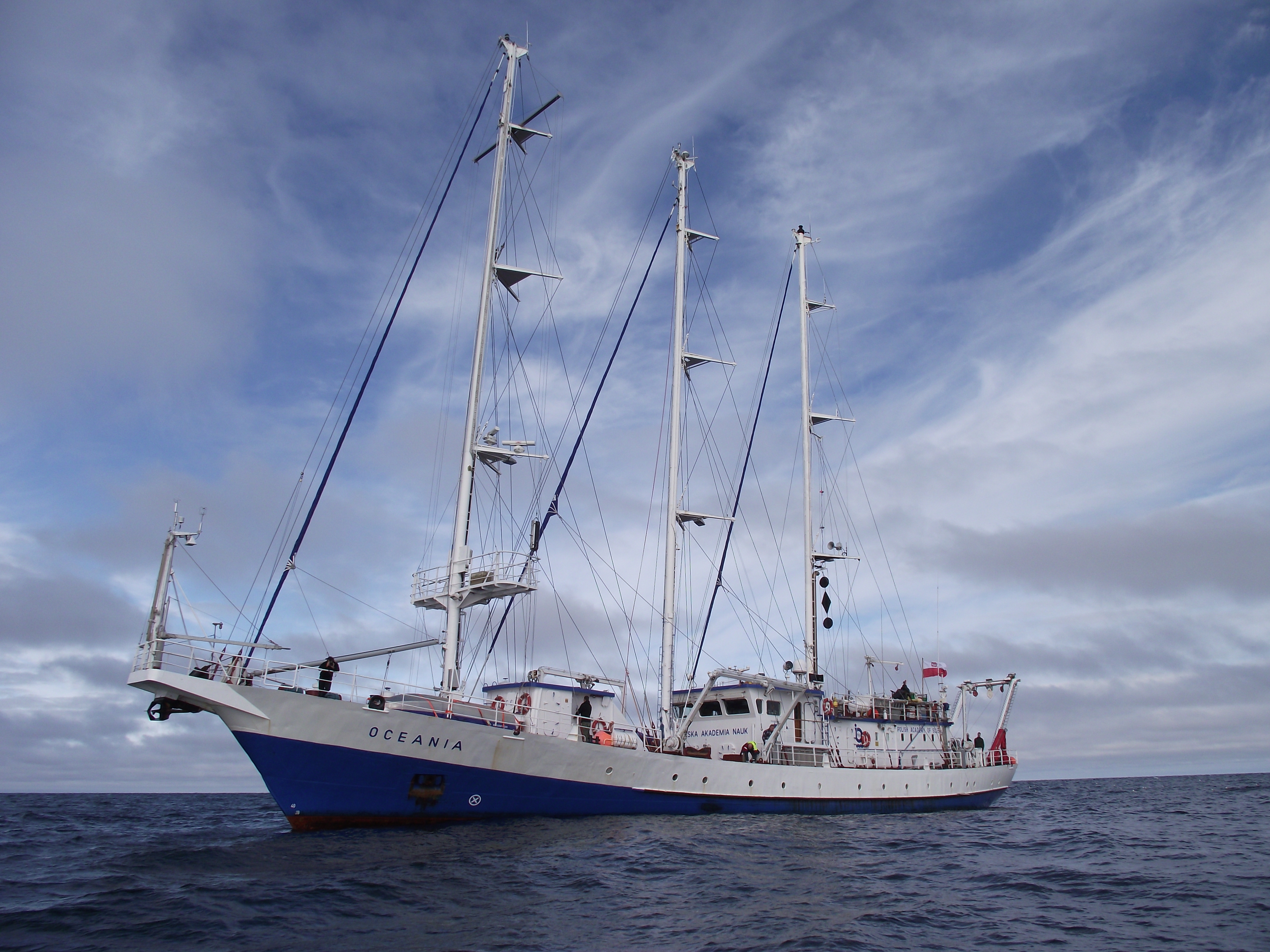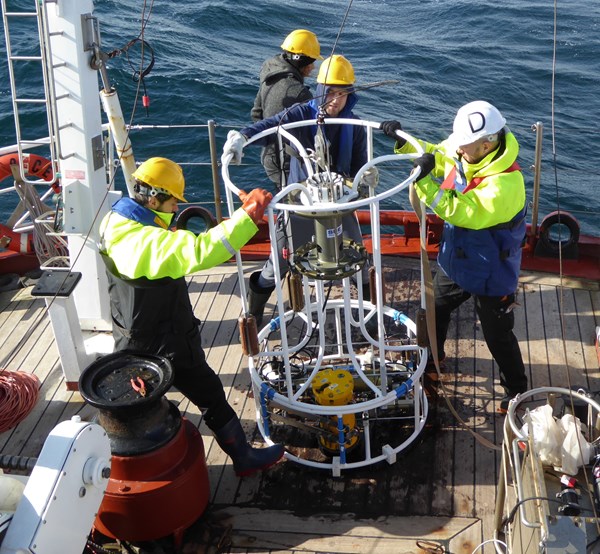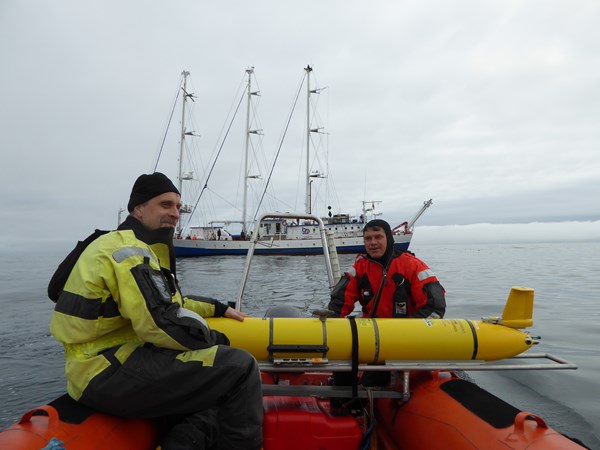
IOPAN's research vessel Oceania.
This summer, as every year since 1987, the large-scale field survey was carried on from the IOPAN research vessel Oceania from mid-June to the end of August. This long campaign is the core activity of the long-term monitoring programme AREX, focused on multidisciplinary in situ observations in areas such as physical oceanography, air-ocean interactions, ocean biogeochemistry and ecology to study the long-term changes of the Arctic environment.
Measurements in AREX are repeated each year on the same regular grid of more than 200 stations and cover the Atlantic water inflow through the eastern Norwegian and Greenland seas, into Fram Strait up to the southern Nansen Basin in the Arctic Ocean. In recent years retreating sea ice in the Nansen Basin has allowed the expansion of the operational area of RV Oceania, a vessel with no ice-breaking capabilities, to the north and northeast of Svalbard for monitoring the Atlantic water as it enters the Arctic Ocean boundary current.

AREX: Taking CTD (conductivity, temperature, depth) Measurements at Station 2.
In addition to the open ocean measurements, an extensive observational campaign takes place every year in the western Svalbard fjords (Hornsund, Kongsjorden, Isfjorden and occasionally other fjords). Its main focus is on exchanges between shelf and fjord waters and the impact of warm Atlantic-origin water, entering the fjord basins, on marine-terminating glaciers.
Time series of key ocean variables, gathered during 30 years of observations under the AREX programme, allow the monitoring of changes in the Arctic physical and biological environment and improving numerical simulations of ocean, sea ice and climate in the Arctic region.

AREX: Preparing to deploy the glider.
The last summer expedition was however exceptional in our long history of measurements around Svalbard. We had a difficult start this year, as weather conditions in July were unusually harsh. Strong winds (up to gale force) and high waves persisted for a few weeks, making our measurements from the relatively small vessel extremely difficult. Seeking better working conditions, we decided to move to the north of Svalbard (what was originally planned for the latter part of the trip), going along the eastern coast of Svalbard and through the Hinlopen strait.
For the first time during our many expeditions, the Hinlopen strait and the adjacent ocean area was entirely ice free in July and we were able to extent our CTD sections much farther north then ever before. Sea ice cover is diminishing fast in the southern Nansen Basin and in the last decades we could witness theses changes when returning there year by year with our no-icebreaking vessel.

AREX: RV Oceania off the coast of Svalbard.
To find out more about INTAROS and the summer sampling campaign, visit our Recent News section.
You can check out all the observing sites assessed by INTAROS in this interactive map.
01 December 2018